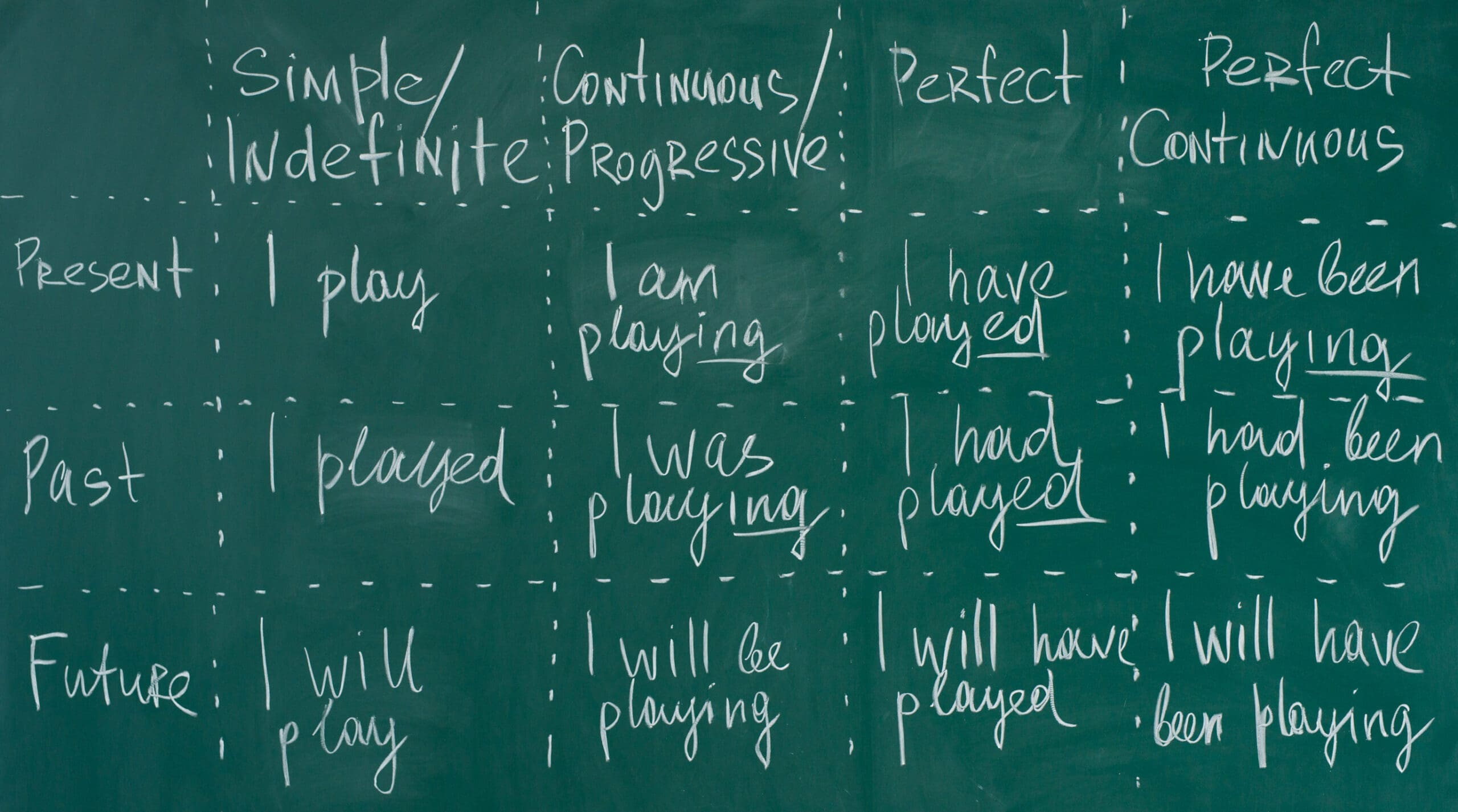In this post
Now that we have established that different verb forms determine the tense or mood in which something is happening, let’s look at these different tenses more carefully. Before, you may have thought that tense was made up into three forms: the past, the present and the future. However, this is not the case. There are actually 12 different forms of tense; although knowing all of them is useful, we are going to go into detail by looking at seven of them. We will look at basic, simple present, present continuous, simple past, imperfect past, future continuous and future progressive tense verb forms.
So, the tense of a verb tells us if something has happened in either the present, the past, or if it will happen in the future. It is important to keep the tense consistent as otherwise your writing may appear confusing and the meaning you are trying to make could become unclear.
The Basic Form
The basic form is the simplest form of a verb. It is the present tense of every verb and the form that you see written in dictionary entries. The basic form of a verb can be modified by auxiliary verbs to alter the tense and meaning. For example, instead of just ‘to run’, we could say ‘will run’, ‘did run’, ‘would run’, ‘should run’ etc. Below are some more examples of the basic forms of some of the verbs within the English language. Try putting an auxiliary verb in front of each and notice how the meaning changes.
- run
- sleep
- jump
- sing
- laugh
The Present Tense
The present tense describes an action that is happening in the present time. There are two forms of the present tense, the simple present and the present continuous.
- The simple present: the simple present is used to refer to actions or situations which are in existence at the present time or happen regularly, but are not happening right at this moment. They consist of the main verb with no auxiliary ‘helping’ it. For example, ‘Asher works at the school’. Here, we have said that Asher works at the school but we haven’t specified whether he is in it at this particular time.
- The present continuous: the present continuous is used to describe an action that is directly taking place at this point in time. For example, ‘Asher is working at the school’. Here, we establish that Asher is at the school at this moment in time. Also, notice the auxiliary verb ‘is’ helps the main verb ‘working’
The Past Tense
The past tense describes an action that has already occurred. We will discuss the simple past and the imperfect past tense.
- The simple past: the simple past describes an action that has begun and been completed in the past. For example, ‘Asher worked at the school’. This implies that Asher no longer works at the school and his time there is complete.
- The imperfect past: the imperfect past is used to describe an action in the past that has not been completed. You will find that the conjugation of the auxiliary verb ‘to be’ is used. You will also find the ending ‘-ing’ is added to the verb. For example, ‘Asher was working at the school’.
The Future Tense
The future tense is used to refer to something that is going to happen in the future. We will discuss the perfect future and the future continuous tense.
- The perfect future: the perfect future is used to describe that something will have been completed/finished by a certain point in time. This tense often includes the words ‘by’ and ‘in’. For example, ‘They will be married by the end of next year’ or, ‘I will finish this work in three hours’.
- The future continuous: the future continuous consists of an auxiliary (the verb ‘to be’) and also the ending ‘-ing’ added to the main verb. For example, ‘I will be going to school’, or the alternative negative, ‘I won’t be going to school’.
When you are undertaking writing tasks in your course assignments and in the exam, make sure that you have kept the past, the present and the future consistent in your writing. If you are aware that you struggle in keeping the tense of your writing consistent then stick to the past tense throughout as this is the most natural form when writing. A couple of examples of what NOT to do are provided below:
- ‘Sandra, the shopkeeper, starts work at 8 o’clock every morning because she wanted to.’ – Here, ‘wanted’ should appear as wants as the verb ‘starts’ is in its present form.
- ‘Eliza didn’t like playing football, she really enjoys basketball instead.’ – We can change ‘didn’t’ to doesn’t here to keep the sentence in the present form.



